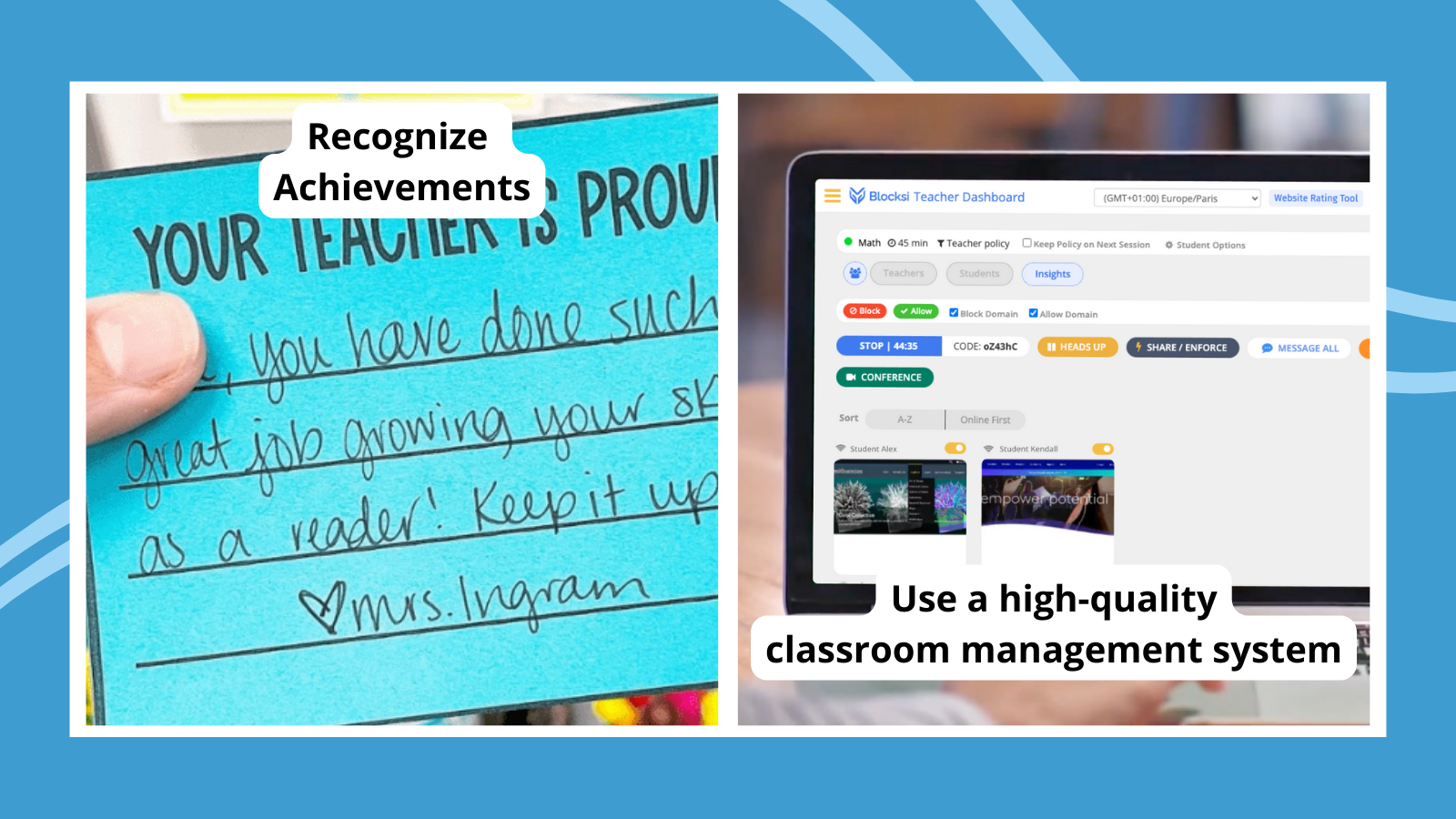

Blocksi helps schools become 21st-century learning environments by keeping students safe and secure as they use the internet both at school and at home. Click here to learn more about their tools and services including content filtering, monitoring, and reporting tools.
Jul 27, 2023 Brought to you by BlocksiBlocksi helps schools become 21st-century learning environments by keeping students safe and secure as they use the internet both at school and at home. Click here to learn more about their tools and services including content filtering, monitoring, and reporting tools.
Peer into some classrooms, and they seem so easy to manage. Others, not so much. In reality, classroom management is one of the toughest things that teachers do, but it is a skill that you can develop and perfect over time. Use these teacher-tested management techniques to design and manage your own ideal classroom environment.
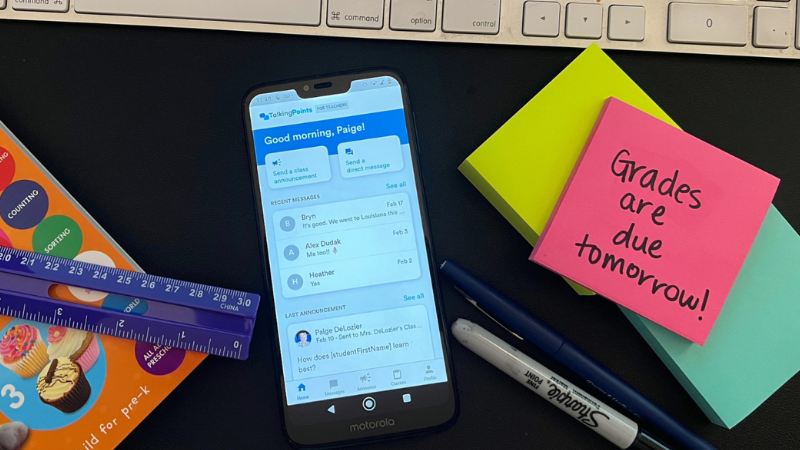
This doesn’t just mean calling home when there’s a problem. That’s important, of course, but so is sharing students’ successes with their families. Every parent wants to hear positive news about their child, and this reinforcement almost always makes its way back to the student. Try to contact at least one family each day to celebrate their child’s achievements.
If this sounds like a lot of work, we’ve got good news! Parent-teacher communication apps make things so much easier. One of our favorites, TalkingPoints, is a free app that focuses on family engagement, especially for under-resourced, multilingual communities. Parents and teachers text each other through their phones or a web browser, and the app provides any translation needed. Texting allows both parents and teachers to communicate on their own schedules, improving the process for everyone. You can learn more about TalkingPoints here, and when you’re ready to get started, sign up and start communicating for free today.
These days, there are no set rules for what a classroom needs to look like. Think about your teaching style, and create a classroom with areas that match. Do you do a lot of group work? Use tables, or desks that can easily be rearranged. Be sure to provide spaces for students to work on their own comfortably, and accommodate any special needs. Consider asking students to help create the space that helps them learn, and be open to their suggestions.

Most teachers start the year by sharing their classroom rules and procedures. If you really want students to abide by them, take some extra time to explain more specifically what you mean and why they matter. If your first rule is “respect each other,” students will likely need some clarification around what that means to you. Brainstorm a list together, or ask students to act out appropriate and inappropriate behaviors.
Take things a step further by having your students work together to create classroom rules that they all agree to follow. When you use techniques like giving kids buy-in and treating them like adults, it improves classroom management.
Every single teacher must be prepared with specific plans for behavior issues, including consequences for poor choices. Determine what you’ll say and do (it can help to role-play some common scenarios with more experienced teachers in advance). Try to match consequences with behaviors, so they’re more meaningful for students. In the heat of the moment, it can be tough to hand out a consequence. Enforce the consequence without any emotion. “You did this, and the consequence is this.” This helps students see that the behavior is unacceptable, but the student is still valuable.
Once you’ve established your rules and behavior management plan, stick with it, every single day. When you tell kids to stop talking and get back to work, but you don’t follow through, you are effectively telling them it doesn’t matter that much. This can lead to teachers raising their voices and saying things they regret. You don’t have to be mean—you just have to mean it.
Seriously, no screaming, shouting, or yelling in the classroom. Most kids just tune it out anyway. Determine other methods for getting students’ attention, like doorbells, clapbacks, or hand signals. These classroom management strategies save your voice and lower everyone’s stress levels.

Sitting still is hard. Whenever possible, let kids get up and move around in your classroom, even just for a minute or two. This helps reset their brains, shake out the wiggles, and prepare to focus on learning again. Even better? Use active learning activities when you can. When moving and learning happen together, kids really benefit.
People learn in a variety of different ways, so the best classroom management techniques include lots of variety too. Offer activities that work for multiple learning styles: Allow students to read a text, watch a video, have a discussion with their peers, do hands-on practice, and more. When a student struggles with material, try switching up the teaching and learning methods you’re using. The more opportunities you give students to succeed and feel confident in their learning, the better.

So many classroom management challenges can be averted by considering and planning for the needs in your classroom. Regularly review IEP and 504 plans, and share any concerns or questions with the special ed team. Be transparent with these students so they know the plan—and they know you know it too. Encourage kids to remind you of their accommodations, so it’s a team effort. This reduces anxieties for everyone and empowers kids to ask for what they need.
When students feel seen, their learning and achievement skyrockets. As you learn more about your students, look for ways to represent their diverse characteristics in your lessons. Highlight BIPOC scientists, LGBTQ+ authors and books, and multilingual learning resources. Educate yourself on the differences between equality and equity, and strive to understand the challenges many of your students face both in and out of the classroom.
When a student struggles, we sometimes want to help them “save face”—or help ourselves avoid difficult conversations. So, we choose to punish the whole class, or spend extra time on a topic that only a few kids really need help with. Learn to privately address challenges directly with the student(s) affected. These conversations really do get easier over time and can help you build strong relationships all around.
Kids come to school with all sorts of baggage and often take out their wider frustrations on teachers and fellow students. It can be tempting to take things personally and let your emotions take over. Instead, take a step back and return to your behavior management plan. Ask yourself, “What does this student need right now?” and go from there. In the rare case where you and a student actually do seem to have a personal conflict, remember to address that individually with them instead of getting into a shouting match in the classroom.
In the same vein, be sure that you’re truly addressing the problem you have, not the one you think you have. For instance, if it feels like one particular student is constantly interrupting the class, start keeping track. (Better yet, have another teacher or admin step in to observe and keep track for you.) It might not happen as often as you think, or it might be that there’s a pattern to the problem that suggests its own solution. Do your best to use classroom management techniques that approach situations with logic rather than emotion or frustration.
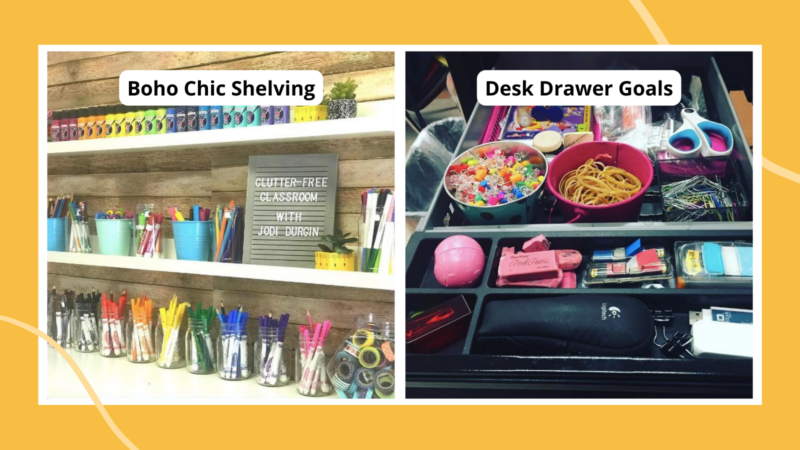

Teachers have a million different things to do during any given day, so organization is one of the most important classroom management strategies. There’s a reason so many teachers love their daily planners and can’t get enough classroom organization ideas. Here are some of our favorite articles to get you started:
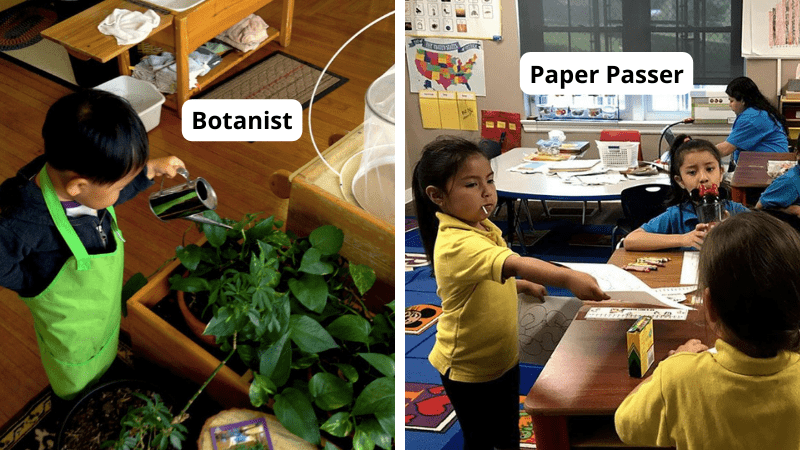
One way to help with organization is to take some responsibilities off your plate. Delegation is one of the best classroom management strategies because it empowers your students. They can take over jobs like taking attendance, cleaning up workstations, passing out papers, and even grading each other’s homework. Stop looking for ways to do things for your students, and instead find ways they can do things for themselves.
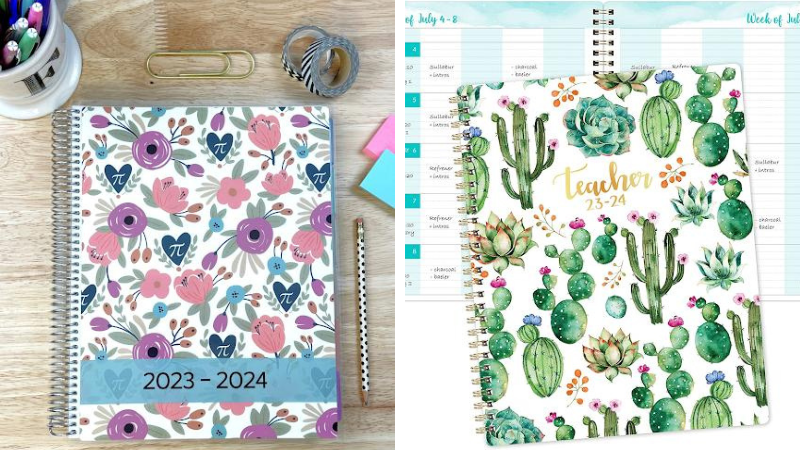
Even if you aren’t required to submit lesson plans, that doesn’t mean you shouldn’t do them. There’s a lot to manage throughout the day, and not knowing what you are supposed to be teaching can easily destroy a good day. Develop plans that work for your teaching style, accommodate all learners, go along with curriculum standards, and pique the curiosity of your students. It may sound daunting, but the more you do it, the better you’ll get. A well-planned day is one of the best classroom management strategies for making an immediate positive impact. Plus it can make all the difference between being tired and flat-out exhausted.
Then again, the best-laid plans sometimes get derailed by snow days, sick kids, escaped hamsters, and other unforeseen emergencies. Teachers have to be able to be flexible and make adjustments on the fly. Build extra time into every lesson plan for the unexpected, and keep a supply of early-finisher activities on hand too. When you utilize classroom management strategies that help you go with the flow, your life becomes so much easier.
Feeling down or negative? There’s a good chance you’re only focusing on the perceived failures or struggles in your classroom. All too often we spend our days telling students (and ourselves!) what went wrong. Just as it takes practice to notice things that aren’t going well in the classroom so you can course-correct, you might need to work on noticing things that are going well. Get in the habit of making a daily list of successes, even if they’re as small as “every kid remembered to turn in their homework on their own” or “Luiz and Geena didn’t fight at all today.” Use that list to praise students personally or send positive texts to families.
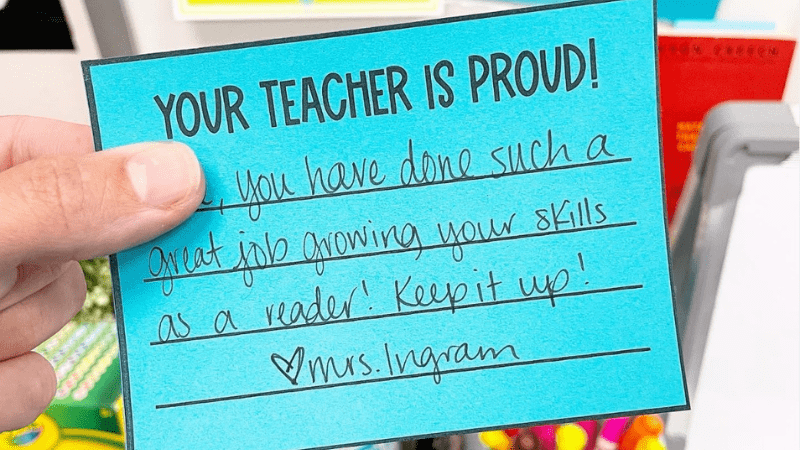
Be lavish with your praise! We don’t always need to be problem-solving. Instead, build on the positives, which will then push out the negatives. For example, if you see kids working together to solve something, notice it out loud. “Nice teamwork, you two. Can you share why you decided to do this together instead of on your own?” This way you’ll get to hear their thinking, and other students will get to learn that it’s OK (and encouraged) to do things differently.
As you’re celebrating achievement, try to look for and praise the behaviors that led to it. This encourages kids to value a growth mindset, where getting better at something is just as important as being good at it in the first place. So if a student receives a C on a test but it’s a 10-point improvement over their last score, tell them you’re proud. Ask how they accomplished that gain, and encourage them to keep up the positive behavior.
A kid shows up late. “Everything OK? We missed you.” A kid doesn’t have their homework for the fourth time this week. “Hey, is something going on that’s making it hard for you to get your work done? This is really important, and I want to make sure you’re able to do what you need to do.” A kid throws a tantrum in class. “Wow, you’re really struggling with self-control. Can you tell me why? Are you hungry or tired?” This is one of those strategies that can be a real game-changer with your most challenging students. Learn more at the link.